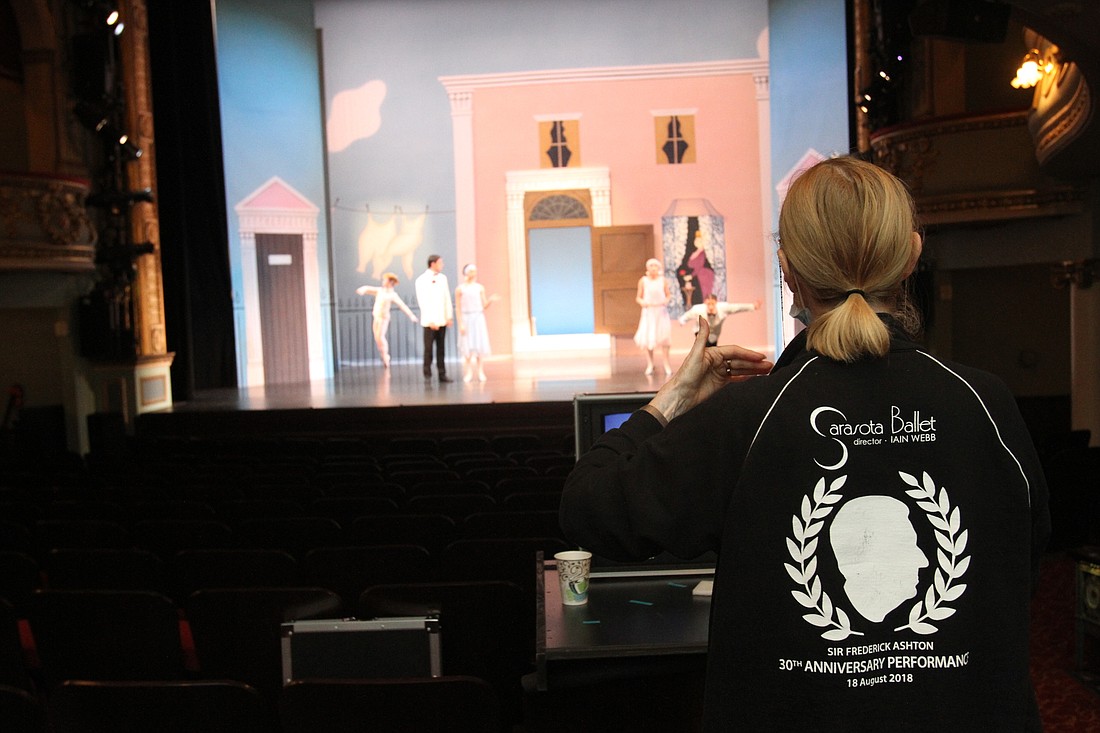- November 22, 2024
-
-
Loading

Loading

When he’s on stage, ballet dancer Daniel Pratt feels entirely in his element.
The 30-year-old Sarasota Ballet coryphee dancer says there are times when he’s performing in front of a live audience that he feels absolutely beautiful and satisfied that he’s giving it his all.
When he gets off stage and takes a look at himself on video, it can be a different story. With a live performance, Pratt knows he has the one shot to put on a good performance and leave it all out there. But with a video recording, Pratt can fixate on small details in his dancing that rub him the wrong way.
It might not always feel right, but it’s usually exactly what the ballet’s technical team needs. The Sarasota Ballet has transitioned to a digital format for much of the pandemic, where the company’s dancers put on a series of filmed performances to be streamed at home by the organization's typically in-person audience.
“Initially I didn't like watching myself,” Pratt said. “It’s like hearing yourself back on voicemail. That was an obstacle, but now I’m in a place where I can't quite say I enjoy it, but I'm using it as a learning tool where I’m watching what I’m doing.”
While Pratt and other dancers have learned to put on a different kind of performance, the ballet’s technical staff has had to learn how to properly capture that performance on video.
“Everything was completely different before the pandemic,” said Andres Paz, a videographer who now helps edit the program videos together for the ballet. “Everything kind of transferred digitally after the pandemic so the dancers could keep dancing.”
The company’s sixth digital program, which is set to premiere April 23, is a collection of works from Sir Frederick Ashton. Preparation for 'Valses nobles et sentimentales', 'The Walk to the Paradise Garden', and 'Façade' requires a joint effort between the ballet’s lighting specialist, videographers, choreographers and performers to make the video look just right.
Staff work for authenticity when lining up performers and adjusting the lights — they want the video on audience's screens to feel just like how it would in person. It requires a different skillset and approach for much of the company’s longtime staff.
Assistant Producer Margaret Barbieri, who has staged the performances for the sixth program, directs the on-stage performers with a microphone while standing at a distance. It’s her favorite work, but she admits the new approach has been a trial and a tribulation.
“You can't say ‘Oh, that's what I did last program so to apply to this (program),’” Barbieri said. “Every ballet is different.”
Much of that difference and focus involves the right amount of color and lighting, which is where resident lighting designer Aaron Muhl comes in. He describes his current job as a rotating process where he monitors both the live stage and the video coming through the cameras to make sure the proper amount of light and color is displayed on the stage so that it comes in looking authentic in video. The end result is often performers going through their motions on a brightly lit stage that ends up looking correct on video.
Increasing and decreasing the intensity and color of light to match a production’s mood and emotion is what Muhl aims for with each production.
“The camera is very sensitive to some colors, and not so sensitive to others,” Muhl said. “I find that I'm saturating color for the camera, as opposed to the live stage. It has to do with the balance between what's on stage and how it should look and what the camera actually picks up. Sometimes they're minimal changes. And sometimes they are extraordinarily drastic changes.”
Paz looks at the filmed result during rehearsal and makes sure the lighting, color and tone is how it should be as if you were in a live show. Everyone’s retinas are different, and everyone has a different kind of screen — be it a laptop, iPhone, tablet, or more — to view the shows on, and Paz and the videography team work hard to help make sure the programs look consistent on every device.
“Every time there is a change, we immediately see it on the computer to make sure that we are staying loyal to the vision of the choreographer who created the ballet,” Paz said. “... These are moving bodies. What you want to do with the shot is make sure that you're providing the best light.”
Lauren Ostrander, a fellow coryphee dancer performing in the sixth program, says she’s a visual learner and has tried to view her performance videos with a more objective eye.
“I'll literally close one eye and move the phone super far away from me and try to watch it as maybe what majority of the audience is seeing,” Ostrander said. “I realized that they're not picking apart every single pinky finger movement.”
There’s no denying Pratt, Ostrander, and many other performers and staff members are looking forward to dancing in front of a crowd again, but they feel good about dancing at all in this moment.
“I love… seeing the product of your hard work,” Ostrander said. “We're definitely doing our best. That’s reason enough to get up each day and work.”